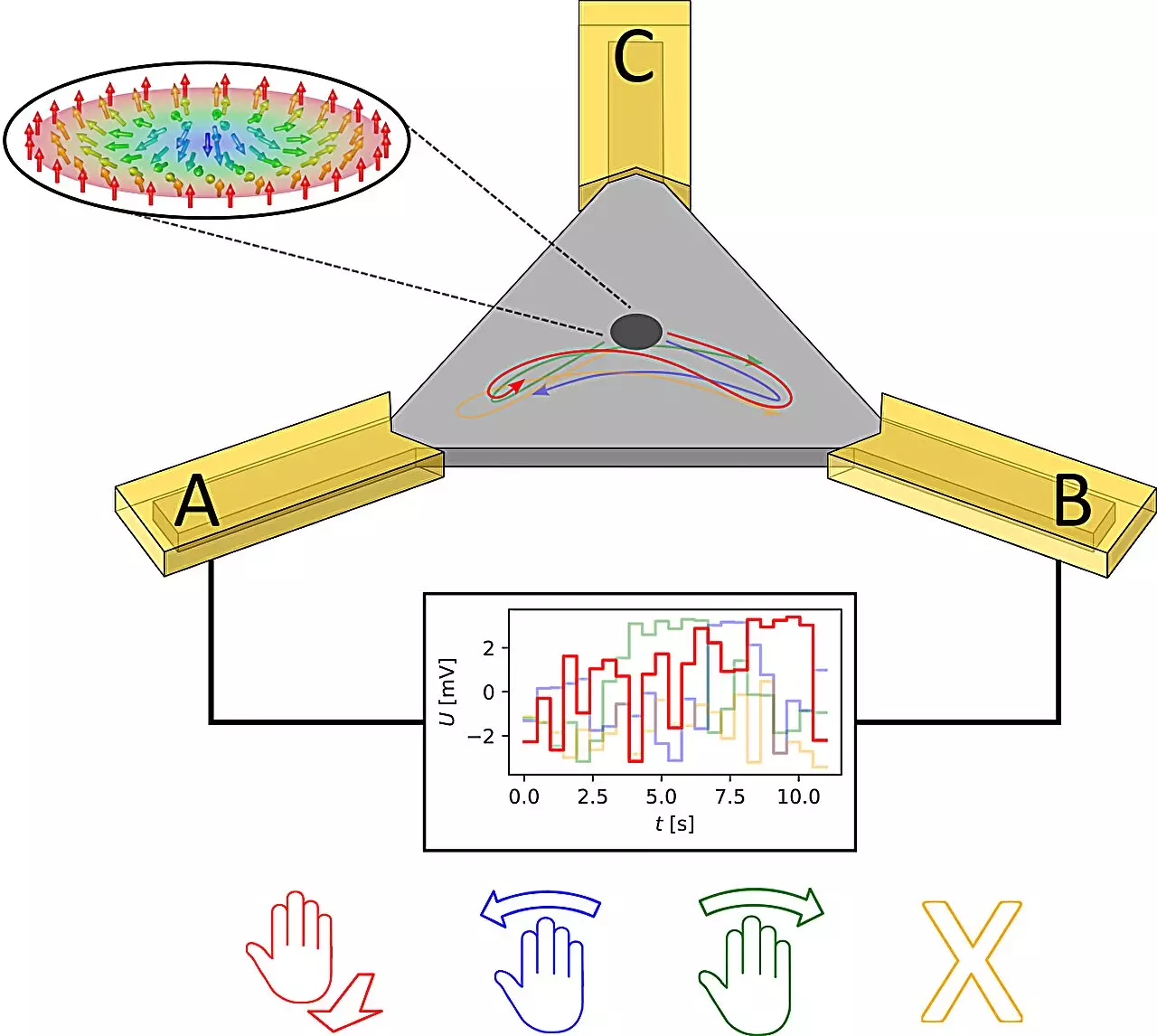The field of gesture recognition has witnessed a paradigm shift with the innovative research conducted by experts at Johannes Gutenberg University Mainz (JGU). By leveraging the principles of Brownian reservoir computing, these researchers have developed a system capable of recognizing simple hand gestures through a robust and energy-efficient process. Utilizing skyrmions, which are chiral magnetic whirls, their methodology presents a compelling alternative to traditional gesture recognition approaches reliant on neural networks and heavyweight computational models.
Brownian reservoir computing functions similarly to artificial neural networks but stands apart due to its efficiency; it does not require elaborate training cycles that generally consume substantial computational energy. Grischa Beneke, a notable member of Professor Mathias Kläui’s team, highlights that the crux lies in training a straightforward output mechanism to correlate the system’s responses with the initial data input. This process can be analogized to observing ripples in a pond after throwing stones into it; the resultant wave patterns convey crucial information about the disturbances.
In this context, the researchers employed Range-Doppler radar technology to capture gestures, effectively translating movements like swipes left or right into voltage signals. This sophisticated technique involves the utilization of two radar sensors to facilitate the conversion of gesture data into a format that can be processed by a triangular reservoir composed of multilayered thin films. This strikingly efficient method positions the system as a frontrunner in the gesture recognition domain.
Skyrmions are at the heart of this innovative system. Initially identified as potential candidates for data storage, they have emerged as versatile elements for computing applications, offering significant advantages when combined with sensor technology. Professor Kläui emphasizes the unexpected breadth of skyrmions’ potential utility, underscoring their capacity not only for data retention but also for computing tasks. In the experimental setup, the motion of skyrmions within the reservoir is dictated by the voltage supplied through its contacts, allowing them to perform complex manipulations in response to the detected gestures.
What sets skyrmions apart is their ability to move in a relatively uninhibited manner, influenced minimally by local variations in magnetic properties. This trait allows for efficient operational models that require lower current levels to instigate motion, presenting a stark contrast to traditional systems that rely on higher energy inputs.
The empirical findings of this research indicate that the accuracy levels achieved by Brownian reservoir computing in recognizing gestures are on par, if not superior, to those achieved through software-based solutions. The inherent advantage of this approach is its data collection mechanism: Doppler radar feeds into the reservoir at comparable time scales, ensuring fluid and efficient processing of input signals.
The researchers affirm that the fidelity with which different hand gestures are detected is commendably high, reiterating the system’s performance in gesture recognition. This capability not only positions the technology favorably against established techniques but also highlights its potential for diversified applications that could substantially improve user interactions in tech interfaces.
While substantial progress has been made, researchers acknowledge that enhancements can still be achieved, particularly concerning the read-out procedure that currently employs a magneto-optical Kerr-effect (MOKE) microscope. Transitioning to utilize a magnetic tunnel junction could operationalize a more compact system architecture. Such advancements promise to minimize the footprints of computing devices, aligning with a global trend toward energy-conscious technological solutions.
Ongoing research is also directed towards emulating signals from magnetic tunnel junctions to further investigate the system’s capabilities in real-time gesture recognition. This exploration is promising and may lead to a burgeoning field of applications, ranging from real-time interactive systems to versatile computing platforms that interact with users in unprecedented ways.
The research emanating from JGU’s Institute of Physics exhibits a transformative approach to gesture recognition, transcending conventional reliance on neural network frameworks. By harnessing the dynamism of Brownian reservoir computing and the intriguing properties of skyrmions, these innovations not only promise enhanced accuracy and energy efficiency but also pave the way for future advancements in sensor technology. As the field advances, the implications of these developments could significantly reshape the interaction landscape between users and technology, signaling an exciting era for computational research and application.


Leave a Reply